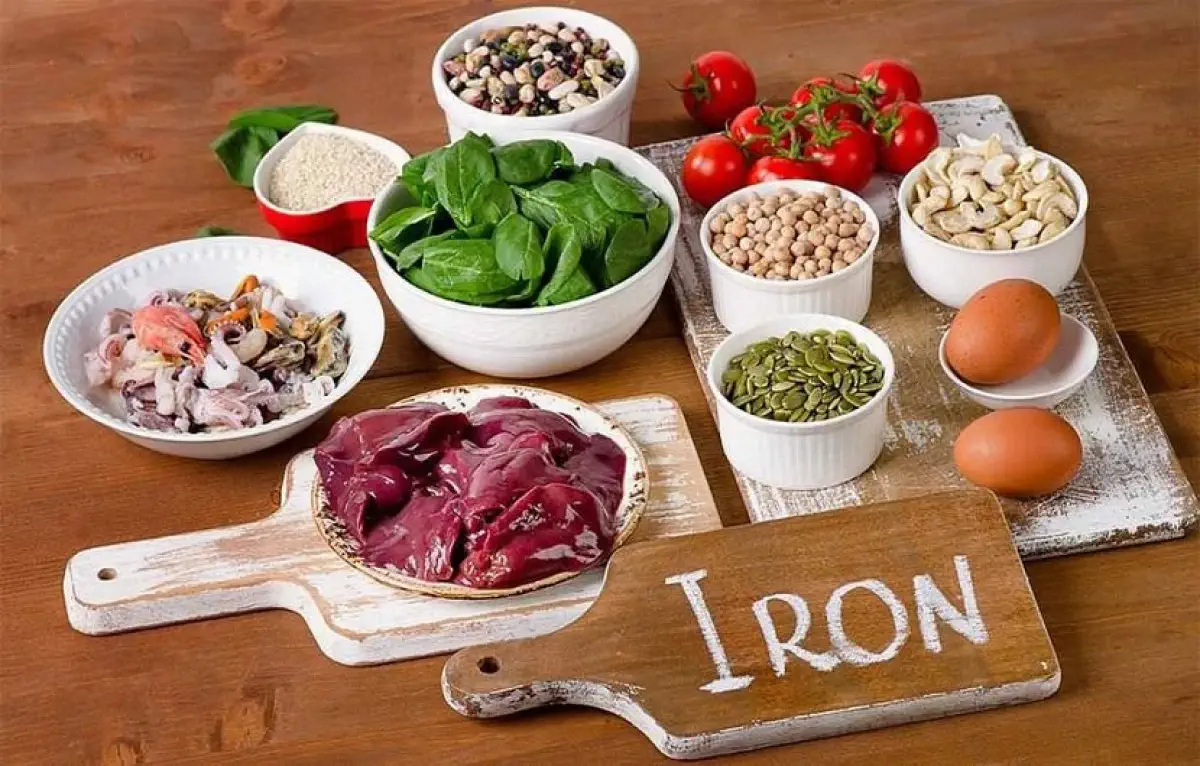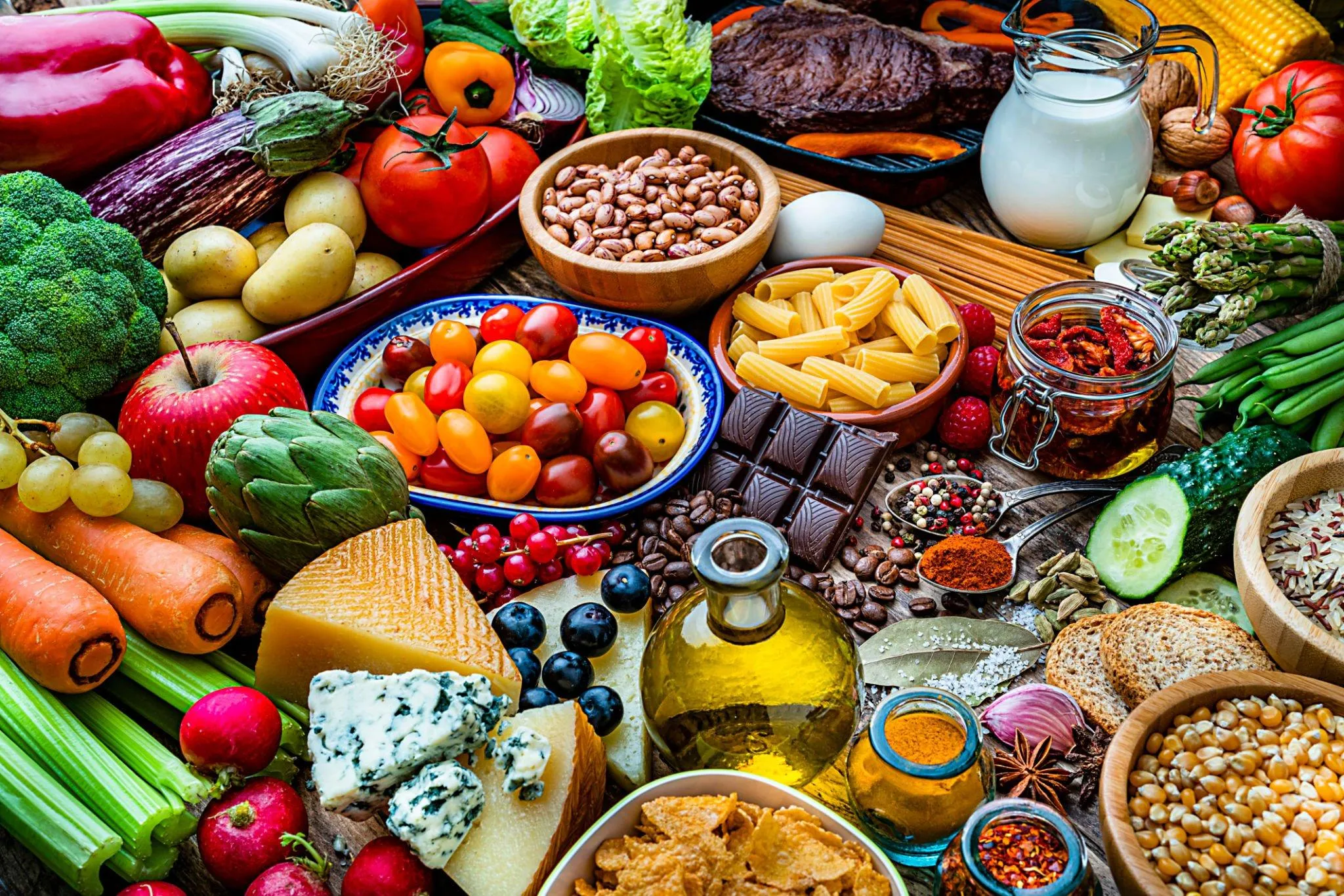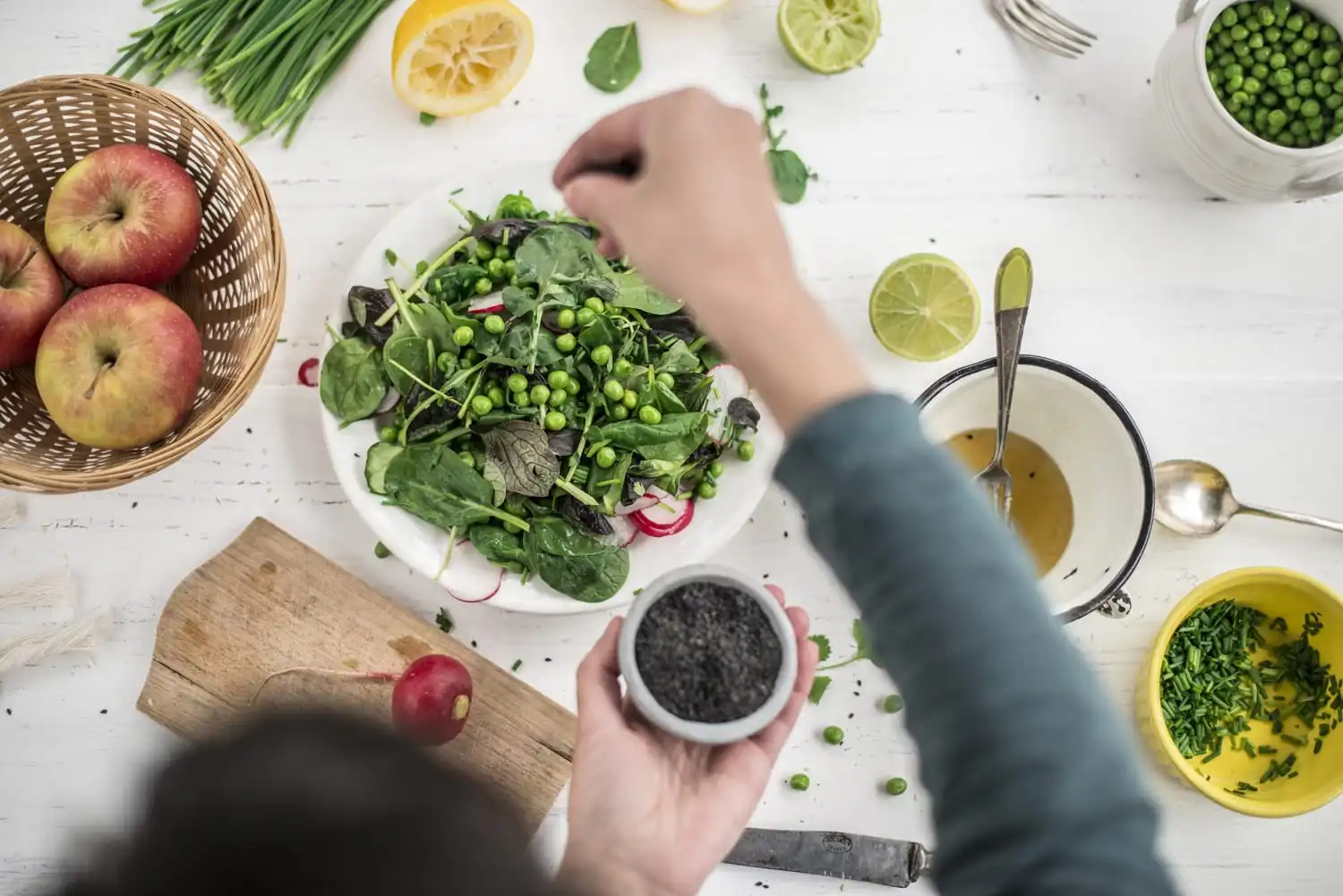
Iron-Rich Foods for Anemia: Tips for Better Iron Absorption
Iron is a vital mineral for the body that performs important functions such as transporting oxygen throughout the body. In fact, iron is an essential element for the production of red blood cells, which prevents anemia. The body alone cannot provide the iron needed to produce blood cells; therefore, we must consume foods containing iron to meet our daily needs for this nutrient. When the body’s iron levels are low, a person develops anemia and a wide range of related symptoms, such as extreme fatigue. If you are also wondering which foods contain iron, keep reading this article from humanhealthmag to introduce you to the best iron-rich foods for anemia in the elderly and blood-forming foods.
Why Should We Eat Iron-Rich Foods for Anemia?
Anemia is a medical condition that usually refers to a decrease in the amount of red blood cells or hemoglobin in the body. This problem can occur for a variety of reasons. One of the main causes of anemia is iron deficiency, which reduces the production of red blood cells, and mild levels can be corrected with proper nutrition.
Considering the relationship between elderly nutrition and diseases, the body needs iron to grow and function properly. Iron is needed to produce hemoglobin (a protein found in red blood cells), which is the main component of blood and is essential for carrying oxygen from the lungs to the rest of the body. Iron also plays a role in many metabolic processes, such as energy production and better immune system function.
There are several ways to increase the amount of iron in the body. For example, consuming iron-rich foods with sources of vitamin C, avoiding sources that inhibit iron absorption, and taking iron supplements. Although each method is important and necessary, consuming iron-rich foods is the first strategy for people to control their iron levels.

Men should consume an average of eight milligrams. Women should consume 18 milligrams of iron per day before menopause. Otherwise, the body will experience iron deficiency and you will experience symptoms such as fatigue, weakness, headaches, lack of concentration, decreased mental performance and even respiratory disorders. Therefore, by consuming iron-rich foods for anemia, the rich sources of which are introduced later in this article, you can help maintain general health, increase energy levels, and improve your physical and mental performance.
How Much Iron Per Day by Age?
How much iron does the body need daily based on age? As we said, iron is an important element in hemoglobin in the blood, which is essential for the body to transport oxygen, produce energy, grow the brain, produce hormones and cells. Many people around the world suffer from anemia due to iron deficiency, which can be partially resolved by knowing the daily amount of iron required by the body and eating properly. The amount of iron the body needs during the day based on age includes the following:
- From birth to 6 months: 0.27 mg
- From seven to 12 months: 11 mg
- From one to three years: seven mg
- From four to eight years: 10 mg
- From nine to 13 years: eight mg
- From 14 to 18 years: 15 for girls and 11 mg for boys
- From 19 to 50 years: 18 for women and 8 mg for men
- Pregnant women: 27 mg
- Lactating women: 9 mg
Generally speaking, there are two types of iron, heme iron and non-heme iron. Heme iron is the iron found in animal sources, and non-heme iron refers to iron found in plant sources. Heme iron is absorbed into the body more quickly than non-heme iron.
Iron-Rich Foods for Anemia
What is the best iron-rich foods to help fight anemia naturally? Fortunately, iron is found in many foods, and by including them in your daily diet, you can compensate for the deficiency of this vital nutrient in the body. The general categories of iron-rich foods for anemia are:
- Meats
- Seafood
- Legumes
- Vegetables
- Fruits
- Other food sources
Below, we will review the list of foods rich in iron and the details related to each of the above in detail.

Meats
Meats are considered the best sources of iron. Many red meats contain heme iron. This type of iron is easily and quickly absorbed by the body. Therefore, consuming meat is one of the best ways to absorb iron for the body. The most important sources of iron-containing meat are:
- Sheep and beef liver: They are one of the best effective foods for supplying iron to the body. For example, 100 grams of beef liver contains 6.5 mg of iron. In addition to iron, liver contains vitamins A, B12, and folic acid, which have numerous benefits for the general health of the body and the immune system.
- Red meat of sheep and beef: Organic meats are rich in protein and blood-building vitamins like B, copper, and selenium. Red meat is also one of the best sources of choline, a nutrient that helps your body absorb iron and other nutrients.
- Dark turkey: Dark turkey meat is another food that contains heme iron. Dark turkey meat contains 1.4 mg of iron per 100 grams, while white turkey meat contains only 0.7 mg of iron. Therefore, consuming dark turkey is more beneficial for both supplying iron and preventing anemia.
- Chicken thighs: Chicken thighs are one of the most popular iron-rich foods for anemia around the world. The most important benefits of chicken thighs related to iron absorption include boosting the immune system, reducing fatigue and improving energy levels, preventing anemia, and helping maintain healthy bones. Chicken thighs also contain zinc and protein. Zinc helps the body use iron more effectively.
Note! Consumption of red meat or other types of meat is recommended in moderation.
Iron-Rich Seafood for Anemia
Some people cannot consume red and white meat for various reasons. Therefore, they choose seafood such as fish and shrimp. These foods contain high amounts of iron and omega-3. We will examine the important details below.
- Fish: It is considered as one of the most important sea foods containing iron. Many types of fish, such as tuna, are rich in iron and are absorbed quickly. Also, fish contain omega-3 fatty acids, which play a role in strengthening the immune system. By the way, flavoring fish with lime is likely to be effective for iron absorption. Because sour lemon is an important source of vitamin C and increases the absorption of iron.
- Shrimp: It contains high amounts of heme iron. Therefore, its consumption is effective for both supplying iron and preventing anemia. Also, although the amount of protein in shrimp is high, it transfers less fat and calories to the body.
- Oysters: Although oysters are not very popular in some countries, they are in the group of iron-rich foods for anemia. All types of oysters are rich in iron and consuming them as a complete meal is effective for iron absorption. In addition to iron, oysters also contain protein, vitamin C and vitamin B12 and can increase the level of healthy cholesterol (HDL) in the blood.
Legumes Containing Iron
Legumes are one of the best iron-containing foods for vegetarians. Legumes are high in iron and absorb fewer calories into the body. To maximize iron absorption, you can eat legumes with vitamin C-rich foods such as citrus fruits, tomatoes, and vegetables. Legumes contain non-heme (plant-based) iron, which is absorbed by the body more slowly than heme iron. The best legumes with iron include:
- Lentils: One of the most useful and nutritious foods containing iron. Every 100 grams of cooked lentils contains about 3.3 mg of non-heme iron. To increase the absorption of lentil iron, you can flavor it with lemon.
- Peas: It is considered as a valuable legume containing iron and fiber. There is about 2.8 mg of iron in every 100 grams of cooked chickpeas. Consuming chickpeas in various dishes is effective for lowering cholesterol, reducing inflammation, and maintaining heart health.
- Soybeans and all food sources derived from them: They are among the most potent plant-based iron foods. There is about 5.1 mg of iron per 100 grams of cooked soybeans. Note that you must buy non-transgenic soybeans. Because transgenic plant products are harmful to the body and almost no nutrients are found in them.
- Beans: They are very useful iron-rich foods for anemia that we can use in most meals. Vegetarians usually get most of their iron and protein from beans. Beans are also rich sources of fiber, magnesium, folate, potassium, and antioxidants.

Iron-rich Vegetables for Anemia
Vegetables are another food that contains non-heme iron. Improving blood formation, increasing red blood cell production, and preventing anemia are among the benefits of consuming vegetables. Let’s examine the most important iron-rich vegetables:
- Spinach: About 100 grams of raw spinach contains 2.7 mg of iron. In addition, this vegetable is rich in vitamin C, which significantly helps in the absorption of iron. Spinach is also one of the iron-rich foods for anemia in pregnancy. If consuming spinach during pregnancy does not cause digestive problems, it will be a good option to strengthen pregnant women.
- Broccoli: A member of the cruciferous vegetable family, which includes cauliflower, Brussels sprouts, kale, and cabbage. One cup of cooked broccoli contains 1 mg of iron. It is a source of non-heme iron, has vitamin C, and is high in fiber and antioxidants, making it effective in preventing anemia. Broccoli is an important vegetable and food source in a vegetarian diet. Vegetarians eat it raw or cooked in salads and with meals.
- Green beans: Another iron-rich food for anemia that is used in various dishes. For example, a meal of green beans with meat and mushrooms is a useful meal for absorbing iron and protein. Some people consume green beans with lemon juice and garlic to increase iron absorption in their body. It should be noted that there is about 10 mg of iron in every 100 mg of cooked green beans.
Other iron-rich foods from the vegetable group include:
- Parsley; about 6.2 mg of iron per 100 grams
- Beetroot leaves; about 2.7 mg of iron per 100 grams
- Kale; about 1.5 mg of iron per 100 grams
- Turnip leaves; about 1.5 mg of iron per 100 grams
To increase iron absorption, eat the above vegetables with tomatoes, bell peppers, and fresh lemon.
Iron-Containing Fruits for Anemia
We will examine the most important fruits containing iron and suitable for treating anemia:
- Pomegranate
- Banana
- Apple
- Kiwi
- White mulberry
- Watermelon
- Fig
- Plums
- Peaches
- Dried peaches
- Dried plums
- Dates
Other Sources and Foods Containing Iron
The group of foods containing iron is very wide and extensive. In addition to all of the above, other iron-rich foods include:
- Quinoa
- Tofu
- Pumpkin seed
- Enriched white bread
- Wheat bread
- Types of pasta
- Types of whole grains
- Oatmeal
- Corn flour
- Dark chocolate
For a more detailed review, we will explain the first three in detail.
- Quinoa: It is an important subset of the blood-building grain group. One cup of cooked quinoa contains 2.8 mg of iron. Vegetarians make dishes like cutlets, coco, omelets, vegetable cream soups, and coleslaw with quinoa. Of course, quinoa is not just for vegetarians and other people can eat it too.
- Tofu (soy cheese): It is a nutritious plant-based food produced from soy milk. Tofu is one of the best vegetarian foods and is very popular in most Asian countries. Like other plant sources, tofu also contains non-heme iron. Vegetarians can eat tofu to supply their body with iron.
- Pumpkin seed: It is considered as a hematopoietic plant material and one of the iron-rich food for anemia. Every 100 grams of pumpkin seeds contains 8.8 mg of iron. The iron content in raw pumpkin seeds is higher than in salted or salted ones. If you want to absorb adequate iron from pumpkin seeds, consume them raw.

Tips for Better Iron Absorption
How to make your body absorb iron better? To better absorb iron, you can pay attention to the following tips:
- Taking iron with vitamin C sources such as oranges, raspberries, tomatoes, or leafy greens such as spinach will increase iron absorption from foods.
- If you use plant-based iron sources such as beans or lentils, you can add vitamin C sources to your diet at the same time to improve iron absorption.
- Substances such as tea, coffee, cocoa, and foods high in calcium can inhibit iron absorption. If you need to consume these substances, it is better to separate them from food consumption at different time intervals.
- Cooking iron-containing foods in ways such as boiling, steaming, or using less oil can help retain iron in the food and improve its absorption.
- If necessary, your doctor may recommend taking iron supplements. These supplements should be taken with the advice and supervision of a doctor to ensure effective absorption and avoid side effects.
By following these tips and proper food combinations, you can achieve better iron absorption from food consumption and benefit from improved iron levels in the body.
Final Words
The body alone is not able to provide the iron needed for energy production, healthy growth and development. You can help provide this nutrient to the body and prevent the complications of its deficiency, such as fatigue, by consuming foods containing iron such as fruits, vegetables, legumes, red meat, fish, dark chocolate, etc.
In this article from the Human Health Mag, we have introduced you in detail to the list of the iron-rich food for anemia. However, if you are still unsure about how to consume iron-rich food sources, it is better to consult an online nutritionist.
Loved this article? Or do you have suggestions to make it even better? Please share your thoughts in the comments below, and let’s work together to build better content!

Frequently asked questions
Are all people susceptible to anemia?
Yes, anyone can develop iron deficiency and anemia, but some factors such as diet, pregnancy status, chronic bleeding or certain diseases can increase the risk of anemia.
What foods contain iron?
Foods such as meat, vegetables, grains, fruits, nuts and legumes are considered iron-rich foods for anemia.
Should children consume more iron-containing foods than adults?
Yes; because children are growing and need more iron than adults.
Does milk prevent iron absorption?
Yes; because milk contains calcium, and calcium reduces iron absorption.
Is excessive iron consumption harmful?
Yes; excessive iron consumption damages the liver.
